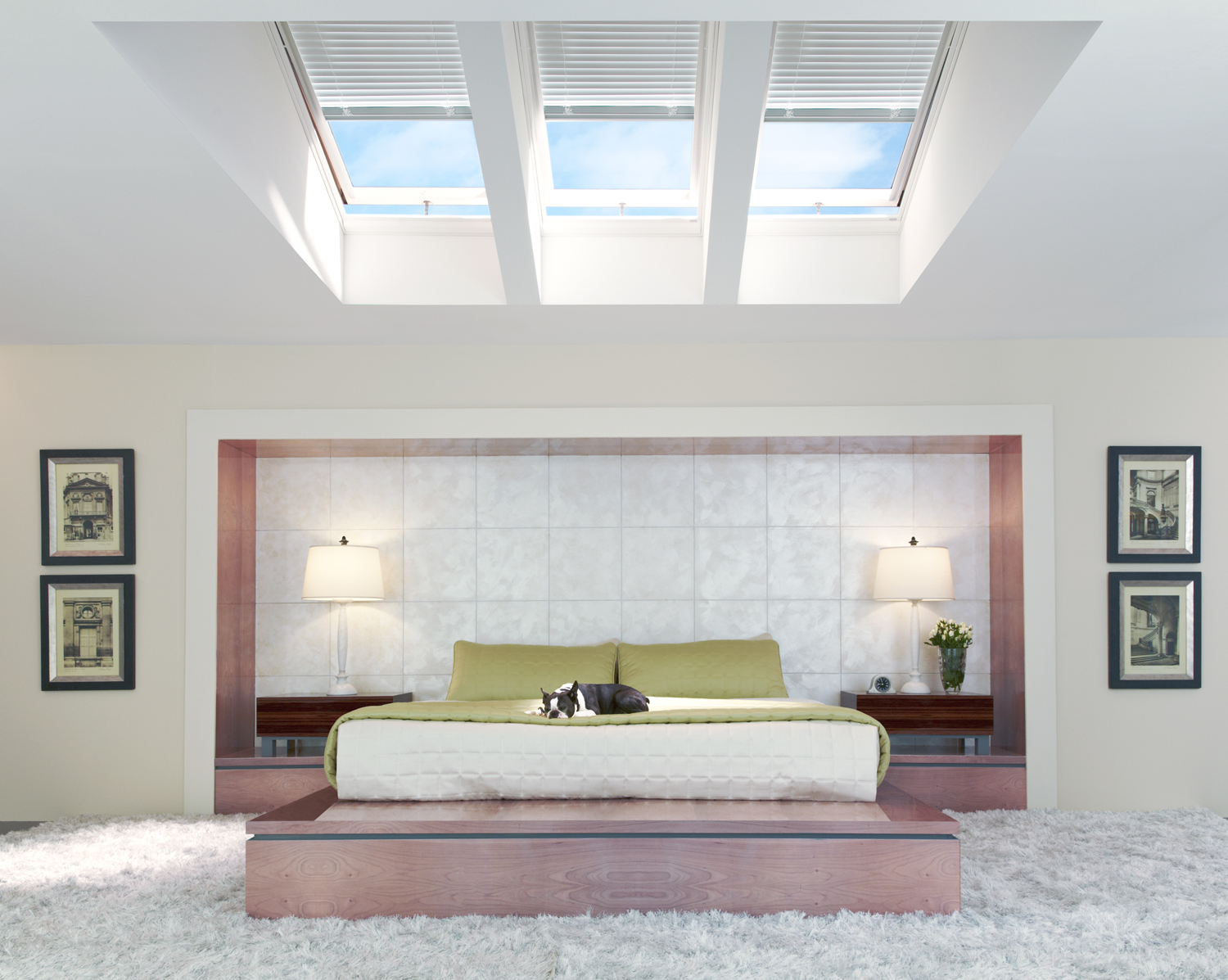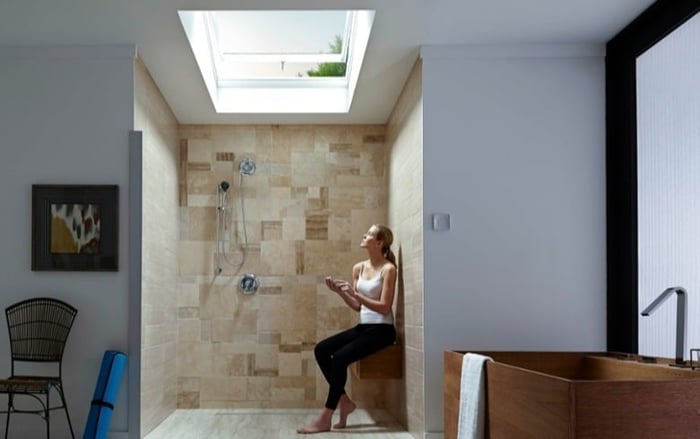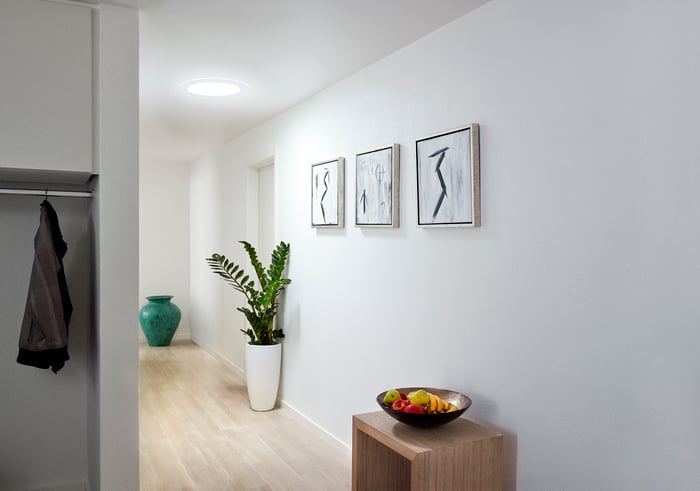
Proper ventilation is what keeps the air in your home fresh and healthy. In other words, proper ventilation is what your home needs to breathe!
Like the lungs, homes need to be able to breathe so that dirty air is expelled and replenished with fresh, clean air. When your home can't breathe, high levels of moisture, odors, gases, dust, and other air pollutants build up, which your family then starts breathing.
For a home to have good air quality, enough air needs to be brought in and circulated so that it reaches all areas of the home.
How Fresh Air Comes Into Your Home
Fresh air is key to your homes ability to breathe, and there are a few different ways it can come into your home:
- through open doors, windows, and skylights,
- through joints, cracks, and openings where parts of your home connect (floors, walls, around windows and pipes, etc.),
- through spot ventilation (i.e., bathroom exhaust fans), and
- through mechanical, whole-house systems built to force air into and out of a building.
Challenges Triggered by Poor Ventilation
There is a reason why our homes aren't airtight: it's because they need to breathe. If your home isn't properly ventilated, you'll start to see other issues pop up, including:
- Pollution. When not enough air circulates, indoor pollution has no way to escape and builds up indoors.
- Carbon monoxide. Without proper ventilation, carbon monoxide can build up to deadly levels inside.
- Radon. Low ventilation can also lead to higher concentrations of radon, exposure to which has been linked to lung cancer.
- Humidity. High humidity outside can make indoor air more humid, increasing the risk of moisture damage like mold growth or wood rot. But a regular exchange of indoor and outdoor air can help balance humidity levels in the home.
Using Ventilation to Protect Your Family's Health
In order to prevent high levels of pollution, carbon monoxide, radon, or humidity in your home, you'll need to make your ventilation system work for you. Here are a few ways to go about doing that:
- Use exhaust fans in bathrooms and kitchens. These rooms produce more moisture, fumes, and airborne particles than any other rooms, so they need to be vented frequently to prevent pollution.
- Make sure gas, propane, wood, or other combustion appliances vent completely to the outside. Clothes dryers should also vent to the outdoors, and clean the vent regularly to make sure dust doesn't block air flow.
- Install a carbon monoxide detector in multiple locations in your house. And never idle your car in an attached garage as the exhaust can move into your home.
- If you've just moved in or are experience signs of radon (shortness of breath, excessive coughing, tightness in the chest), have your home tested for it and, if you have elevated levels, hire a professional to add ventilation to remove it.
- If you paint or use hobby supplies or chemicals in your home, add extra ventilation. Open the windows or use a portable fan to help move airborne chemicals and fumes along.
How Skylights Can Help
Venting skylights are a great way to round out the ventilation system in your home. When strategically placed, they can even offer whole-home airing. And since the ventilation is natural, they're a more energy-efficient alternative to exhaust fans, dehumidifiers, and whole-house fans.
VELUX even offers a system with our venting skylights called VELUX ACTIVE with NETATMO that connects your smartphone to your venting skylights. Once VELUX ACTIVE is up and running, it allows you to monitor the air quality in your home, then open or close your skylights or blinds to ensure optimal temperature, CO2, and humidity levels — all right from your phone.
The Stack Effect
Venting skylights can give your home's natural ventilation a much-needed boost through a phenomenon known as the Stack Effect or Chimney Effect.
We know that hot air rises over cooler air, and the Stack Effect works based on this logic. When you open vertical windows and venting skylights at the same time, the warm, stale air that's accumulated at the ceiling is released through the skylights while cooler, fresh air from outside comes in through the windows. That's the Stack Effect in action: by opening just two windows, you allow air to flow through your home, resulting in whole-home airing.
Thinking venting skylights could help improve how your home breathes? Schedule a free virtual consultation with a VELUX expert to talk through the details of how a venting skylight can help the air quality in your home.
VELUX Skylight Systems
Reimagine Your Home With Natural Light and Fresh Air
-548286-edited-1.png?width=700&name=shutterstock_66607603%20(1)-548286-edited-1.png)
KITCHEN
How to Decorate Your Kitchen with Fresh Air
Fresh air is essential to your kitchen. Find out how to decorate with it by reading on!
Keep Reading
HEALTHY LIVING
4 Ways to Clean the Air in Your Home Naturally
Clean the air in your home the natural way with regular ventilation, houseplants, and more!
Keep Reading
HALLWAY
Natural Light in the Core of Your Home
Illuminate your whole house by installing skylights in the core of your home: its hallways.
Keep Reading